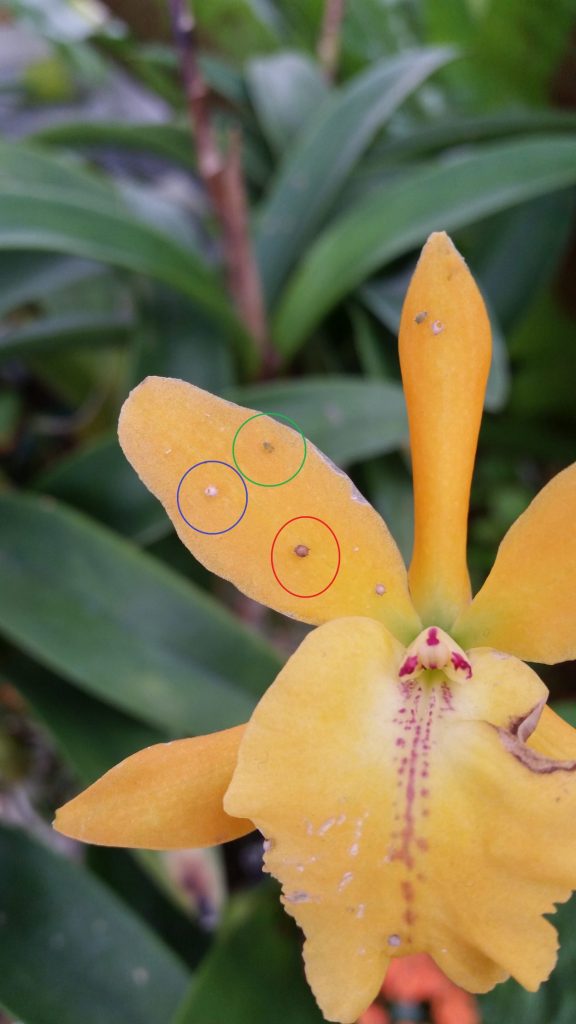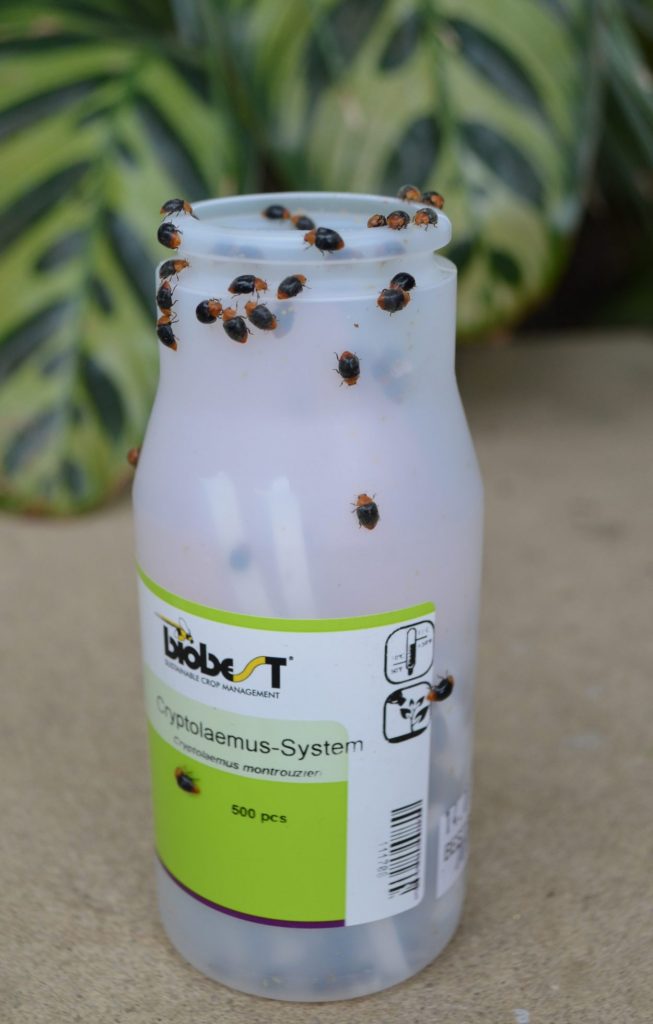How to Control Aphids Without Pesticides
Using Beneficial Bugs
Here at Lewis Ginter Botanical Garden, we rely heavily on beneficial insects and sustainable practices, especially in our 11,000 square-foot Conservatory. Since the Conservatory is a tropical climate, we know that we will always have some insects that enjoy feeding on plants there. When it becomes problematic, we introduce beneficial insects to reduce the pest problems. As the Conservatory horticulturist, I am happy to have insects of all types in my Conservatory, especially if that means less spraying and a safer environment for guests, volunteers, and staff.
Biocontrol in the Garden

Kids from Green Adventures Summer Camp learn about “good bugs” and get to help Horticulturist Chelsea Mahaffey spread them around the Conservatory.
Biocontrol, short for biological control, is a form of Integrated Pest Management (IPM) and the control of a pest by the introduction of a natural enemy or predator. Throughout the Conservatory, we manipulate the mini-ecosystem by use of biocontrol. Monthly, we receive shipments of beneficial insects that we release with help from volunteers and staff (and sometimes even our summer campers!)
Aphids, a piercing-sucking insect, are a common plant damaging insect that occurs in the Conservatory and our own backyard during the warmer months. They gravitate toward a variety of plants, often feeding on the undersides of leaves and stems. While difficult to spot, they can colonize a plant rather quickly. Dealing with aphids and other plant-damaging insects, can seem overwhelming and a burden. As a part of our Integrated Pest Management plan, we release beneficial insects to aid in pest control.

This picture was taken in the East Wing, or Orchid Room, of the Conservatory. The orchid shows part of the life cycle of our parasitic wasp, Aphidius sp. The green circle shows a live aphid, the piercing, sucking insect enjoying our orchid. The red circle shows an aphid mummy or an aphid that has been parasitized by our parasitic wasp. The blue circle shows an empty aphid mummy after the parasitic wasp has “hatched.” After the wasp hatches the cycle is repeated.
How to control aphids
Once we release the parasitic wasps into the Conservatory, they seek out aphids and lay eggs inside of them. The aphid then becomes a mummy, incubating the developing parasitic wasp. Once the wasp is fully developed, they ‘hatch’ out of the aphid mummy ready to seek out more aphids to repeat the cycle. This is one of the examples of beneficial insects we use throughout the Conservatory.
The Conservatory is an extreme case, where the weather is consistently warmer than the outside temperature causing our insect populations to be higher year-round. This is one of the reasons we order biocontrols and add them to our integrated pest management plan.
While we may order beneficial insects from a supplier to quickly increase the number of them in the Conservatory, beneficial insects occur naturally in our ecosystem in Central Virginia. As a home gardener, you can invite beneficial insects into your own garden and watch your mini-ecosystem at work too. Beneficial insects require nectar and pollen to thrive in your garden. Beneficial insects come in a variety of sizes, some half the size of your pinky fingernail and up to the size of your thumb.
When planting to invite beneficial insects to your garden think about the following:
- Plant a variety of flowers that have open nectaries, such as plants in the Aster Family (think cosmos, tickseed, and asters). Open nectaries allow the smallest insects to feed.
- Try for a continual bloom period from early spring until fall, with nectar-producing annuals and perennials such as alyssum for early spring blooms, dill and fennel for summer blooms, and goldenrod for fall blooms. As a bonus, many of these blooms will attract native butterflies too!
- Leave some leaf litter for the beneficial insect to overwinter in.
If you provide beneficial insects with food and shelter, they will happily return the service of preying on you plant damaging insects. You will have a beautiful garden, and won’t have to spray your flowers either.

